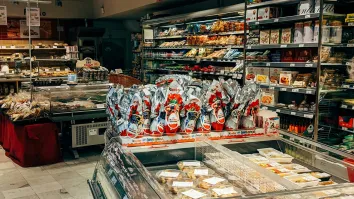
More than 80% of consumer product brands fail to outgrow their categories
Despite developing Asia’s massive opportunities, fewer than 20% of brands outgrow their categories in this region, according to new analysis from Bain & Company, Turbocharging Consumer Products in Developing Asia.
To successfully compete in these markets, brands need to push themselves more than ever to swiftly and continuously adapt to the new realities, the management consulting firm said.
Accelerating market changes, combined with a few basic challenges, sometimes hinder brands aiming to achieve sustainable growth in developing Asia. Consumers in the region are increasingly willing to pay for convenience and they are more digitally connected than ever. Each of these shifts has caused an accompanying change in retailing. For example, throughout developing Asia, consumers now make fewer trips to larger stores, instead flocking to convenience stores. Further, the steady rise in digital connectivity is fuelling a boom in online sales and transforming the way brands talk to consumers to influence purchase decisions.
“Fundamental consumer shifts in developing Asia have accelerated in the past few years, making it tougher for brands to survive and win in a region that remains critical for multinationals,” said Paolo Misurale, partner and head of Bain & Company’s SEA consumer products practice. “All of this is altering the rules of the game for consumer products companies, requiring them to rethink their strategies from ‘where to play’ to ‘how to win’. Then they need to deliver the change, building new capabilities and forging alignment across stakeholders and functions.”
Amid these challenges, Asia also offers huge opportunities for companies that are able to adapt quickly and use their scale advantages. Through its extensive work with multi-national, national and local brands across the region’s developing markets, Bain has identified five common pitfalls and ways to overcome them.
- Sailing with outdated maps
Bain finds that too many brands in developing Asia underinvest when it comes to learning the basics to support that big decision. They also fail to understand other essential elements of their category rules, such as whether the category is more repertoire or less repertoire. Successful companies know where they fit in and then determine where and how to compete. They set growth initiatives that are consistent with category fundamentals and then translate those initiatives to operational metrics to track progress and capture value.
- Saying it wrong
In developing Asia, it is easy to get brand messaging wrong. The goal is to anchor a brand (or a brand story) in consumers’ long-term memories. However, many brands have a relatively short history in these markets, and haven’t yet established and reinforced the kinds of memory structures that have worked so well for them in the developed world. Winning companies overcome this pitfall by understanding the guiding principles for building high-quality brand memorability.
- Succumbing to the lure of the new and different
Traditional trade still abounds in developing Asia and convenience stores are gaining in popularity. Both small formats offer limited shelf space. Yet, Bain finds that many brands are unwilling to reduce their product assortments (or tailor their ranges to unique channel needs) in order to focus on the proven and profitable hero stock keeping units (SKUs) with the highest velocity on the shelf, year after year. Winners invest to understand their heroes by brand and SKU, determining the value propositions they present over non-heroes. Then they look for the gaps in their current assortments, ultimately creating portfolio and investment strategies focused on the top.
- Losing at the first moment of truth
Many brands, especially domestic brands selling in developing Asian markets, lack the abundance of data that allows for sophisticated account planning in developed markets. Without such data, fast-moving consumer goods (FMCG) players need to be as focused as they can on making their hero SKUs available and visible to fundamentally repertoire shoppers, while ensuring the retailer has incentives to push those SKUs.
- Failing to build the right route to market
In developing Asia’s fragmented retail environment, many brands fall short on their efforts to ensure that products get through the last mile and retain their ability to influence consumers’ decisions at the point of sale. The winners in this area are mostly “local champions” that use direct distribution (or a high-touch managed distribution model) in high-density areas, where modern trade is typically more established. At the same time, they build a multi-tiered distribution network and collaborate with hundreds of wholesalers in low-density rural areas, making the big trade-off between having influence over outlets and having penetration across outlets to maintain a sustainable cost to serve.
“Brands can turbocharge their growth through a relentless focus on increasing penetration and consideration,” said Nader Stefano Elkhweet, partner and head of Bain & Company’s Indonesian consumer products and retail practices. “This requires focusing on what shoppers actually do – as opposed to what they say they do in surveys – planning from the ‘shelf back’ to win the battle in stores, and relying heavily on advanced analytics tools to generate the insights that help brands make the smartest trade-off decisions.”



















 Advertise
Advertise






